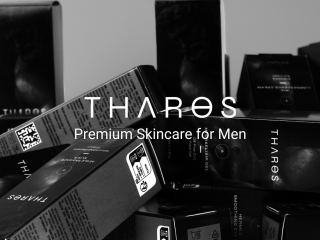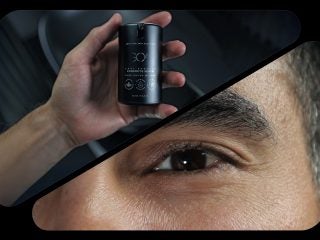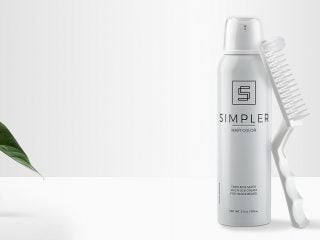You don’t want to be referred to as the baldy guy. Who would? If there’s a way to reverse balding, thinning hair, and receding hairline, the only logical thought that would come next is for you to ask how.
Hair loss, as natural as it is, can affect us men big time. It is undeniable how losing our crowning glory can suddenly make us look old. And we wish we’re exaggerating when we say it affects us, but it is true for most that we can’t be our usual confident selves knowing that we look older than our age.
When it comes to a problem as common as hair loss among us, men, what we’d usually resort to are easy, common sense solutions. Some try home remedies like using oils to promote hair growth, while others use herbal solutions like putting aloe vera or onion juice on their scalp. When none of these seem to help, the last resort is shaving your head altogether.
We’re not discrediting any of the previously mentioned methods, but if you really want to know how to remedy or prevent hair loss. You must understand the science behind it.
So let’s get down to it.
Let’s start with identifying the cause of hair loss. Some would tag it to genes, lifestyle, or diet. These things contribute to hair loss, but the bottom line is it depends on how much DHT you have in your body.
So what the hell is DHT?
DHT stands for dihydrotestosterone. It is an androgen hormone (male sex hormone) that is a byproduct of testosterone when it interacts with the enzyme 5-alpha reductase (told you, we’re gonna go all scientific about this). So as men, we naturally have DHT because it’s what makes us men. But we have to consider that DHT is different from testosterone itself.
DHT is a complex fellow, that’s why it’s often misunderstood. While DHT promotes hair growth in other areas of the body such as in your chest, back, and underarms, ironically, it also causes hair loss in the most seen area of your body — your head. DHT is the main cause of androgenetic alopecia or more commonly known as male pattern hair loss.
What DHT does is it causes your hair follicles to shrink, which eventually weaken and die. In official hair loss language, this is called “miniaturization”. So it’s not like you go bald all of a sudden. It’s a sad, slow, dying process for your hair follicles and you, if you’re just aware, can do something about it.
Block DHT, stop hair loss
We’re going straight right to the most effective solution. If you want to stop hair loss or even prevent it, then you must manage DHT by blocking it. What DHT does is it binds to receptors in your scalp. The more DHT you have in your scalp, the more you experience hair thinning and hair loss.
There are several options when it comes to DHT blockers. You can choose topical solutions like DHT-blocking shampoos or sprays. Usually the active ingredient for this is ketoconazole. Ketoconazole is effective for preventing hair loss by disrupting the DHT pathway to the scalp. But the problem with any topical solution is that it is fully effective if it is used as part of other hair loss remedies. Using topical solutions like shampoos and sprays address the problem only on the site (the scalp) where the problem is, but not directly at the source.
You might have considered biotin or minoxidil. Allow us to tell you bluntly, they are not DHT-blockers. They help stimulate hair growth similar to other hair-growth vitamins, but they don’t prevent hair loss. With this, you can use biotin or minoxidil as part of your hair loss prevention arsenal.
The most effective way to block DHT
So we’ve mentioned about 5-alpha reductase enzyme and how it produces DHT when it reacts with testosterone. There is a drug that prevents this whole process and it is called finasteride.
As published in the Journal of the American Academy of Dermatology, finasteride is seen as the most effective treatment to slow or stop hair loss. Finasteride keeps testosterone as it is by preventing it from interacting with 5-alpha reductase. So with finasteride, there’s no DHT. Without DHT, you won’t experience follicle miniaturization. Without follicle miniaturization, no hair loss. Pretty straightforward.
The good thing about finasteride is it attacks the cause of hair loss. Plus, you can use it with other hair growth promoting products such as minoxidil to promote faster hair growth. The recommended dosage of finasteride is 1 milligram per day to stop most hair loss. This is on average based on clinical trials and studies.
If you’re starting to experience hair loss or you’re beginning to see signs of thinning hair or receding hairline, it is better for you to start taking finasteride. The only limitation of DHT blockers is that they only work at the onset of hair loss. Once you lose all your hair, no amount of finasteride can make you grow your hair back.
Start Building Your Hair Care Routine
So now that we’ve given you the lowdown on DHT and hair loss, it’s already up to you to take action. Time to figure what can help you fight the miseries of going bald. Don’t be afraid to try things out and make an investment. It’s always important to invest in your confidence and self-esteem.
And you’re welcome, we’re always happy to help a brother out.

















